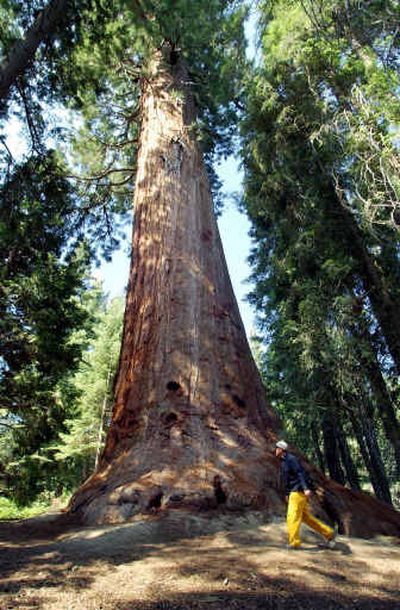Groups file lawsuit over Sequoia logging

Conservation groups filed a federal lawsuit Thursday asking the courts to overturn a plan that would allow extensive logging in the 5-year-old Giant Sequoia National Monument in the southern Sierra.
The lawsuit is the latest skirmish in a long-running battle over management of nearly three dozen groves of the world’s largest trees found on national forest land, beyond the confines of nearby Sequoia and Kings Canyon national parks.
Logging in the national forest groves in the 1980s provoked a preservation drive that led to creation of the 328,000-acre monument by President Clinton in 2000.
The monument banned logging, mining and off-road vehicle use in and around the towering groves, prompting a lawsuit by timber interests. Their challenge failed, but controversy continued when the U.S. Forest Service issued land-use plans that called for extensive timber cutting in the name of fire prevention and ecosystem restoration.
In the lawsuit filed in U.S. District Court in San Francisco, six conservation groups claim the Forest Service plan violates national environmental laws, permits logging that would harm rare wildlife, and runs counter to both the spirit and the letter of the monument designation.
“The plan will allow significant logging, reduction in forest cover and removal of large trees which are critical to survival of already threatened species such as the Pacific fisher,” said Sierra Club legal director Patrick Gallagher, who helped prepare the suit. “The giant sequoia is the largest living thing on earth, and this is the only place they are found, and we ought to give them the utmost protection.”
Forest Service spokesman Matt Mathes defended the management plan, which was recently upheld on appeal by the agency’s regional office.
“After a very, very close examination, we concluded that the Sequoia National Monument Plan is a good plan that meets the spirit and intent of what President Clinton wanted,” Mathes said. “We remind people that the vast majority of trees that are cut will be less than 20 inches in diameter.”
Under the plan, enough trees could be cut in the monument to fill more than 2,000 logging trucks a year. The biggest, oldest sequoias could not be touched, but trees as old as 130 years and as large as 30 inches in diameter – including sequoias – could be felled. The clearing of forest openings as large as a couple of football fields would also be permitted. The plan additionally calls for the use of controlled burns to clean out dense brush and small trees that fuel wildfire.
“It’s just business as usual,” said attorney Rachel Fazio of the Earth Island Institute, one of the plaintiffs. “They’re proposing this kind of stuff all over the Sierra, so it’s not different from any place without monument status.”
The fight over the monument plan mirrors disputes throughout the West, where conservationists contend the Bush administration is using the threat of wildfire to pursue logging projects on public land that are more about helping the timber industry than reducing the fire risk.
In the Sequoia monument, they say the Forest Service should rely much more heavily on controlled burning to thin overgrown land as does Sequoia National Park, which has a long-established program of such burns.
But the Forest Service says more thinning is needed than can be accomplished through burning, which also creates smoke that adds to air pollution problems in the San Joaquin Valley to the west.